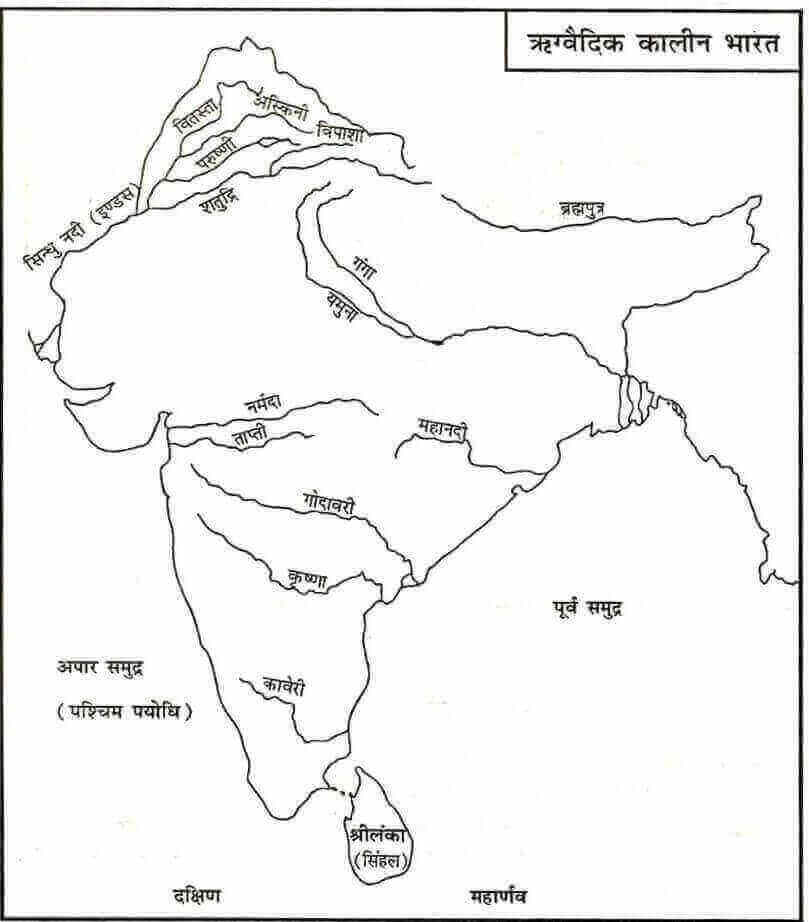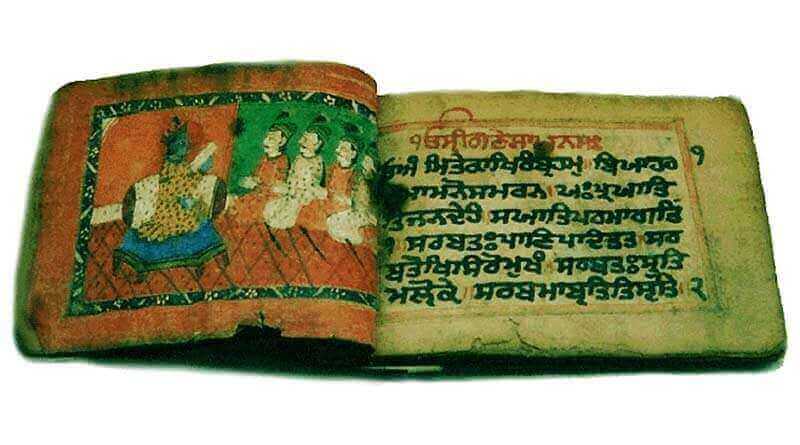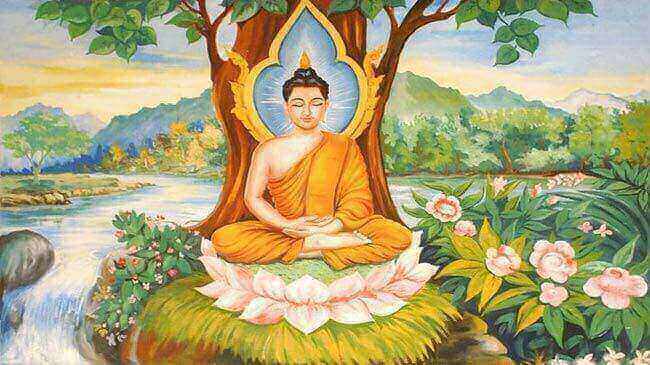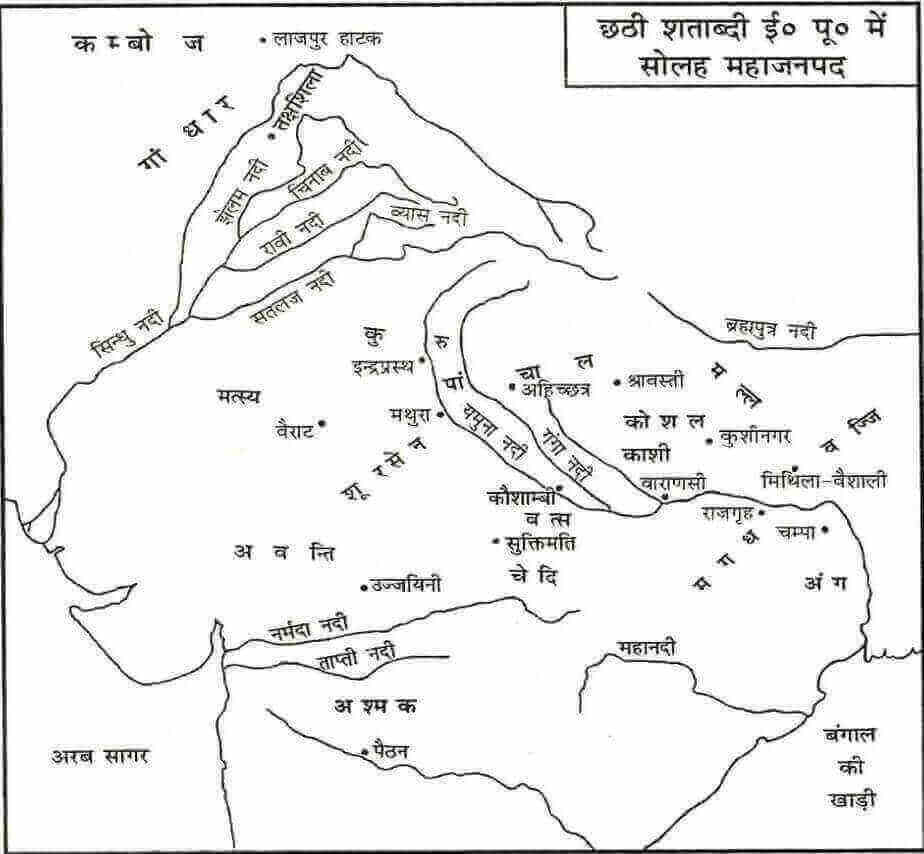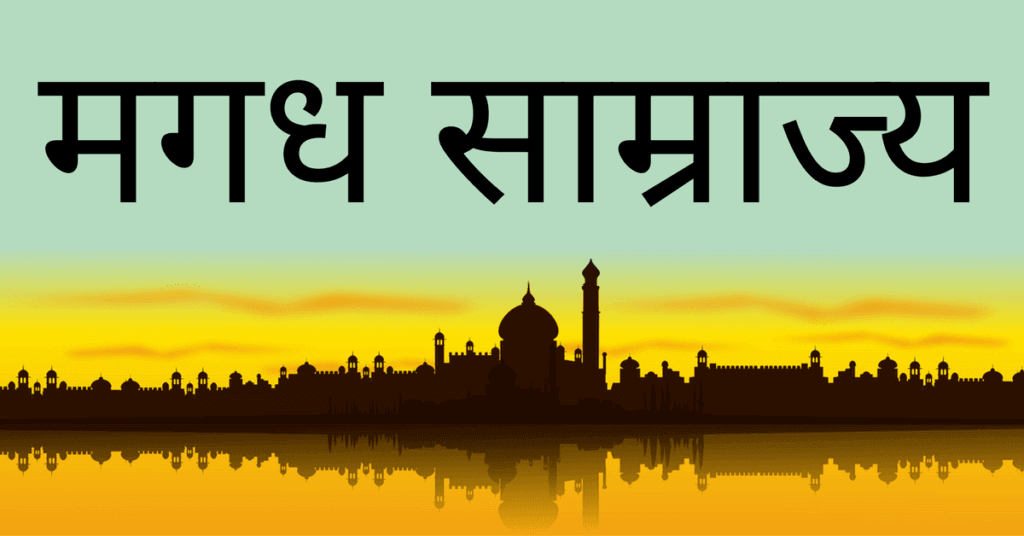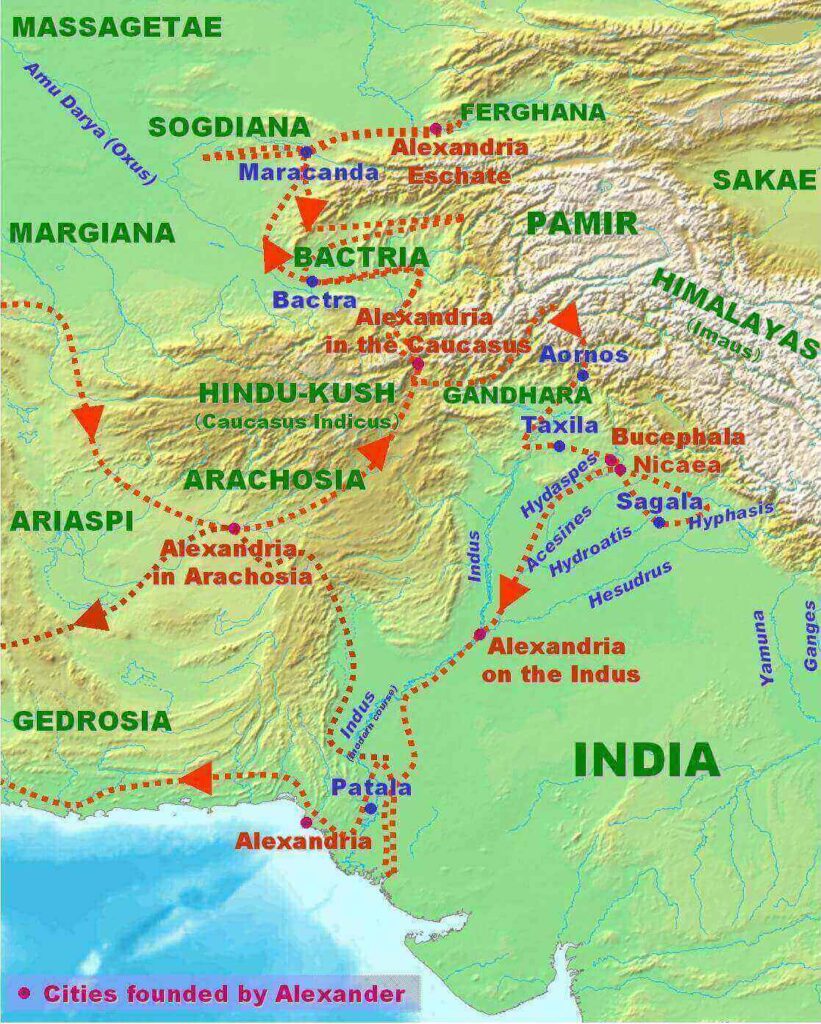Vedic Literature » Veda, Aranyak, Upanishads, Vedang, Puran, Ramayan
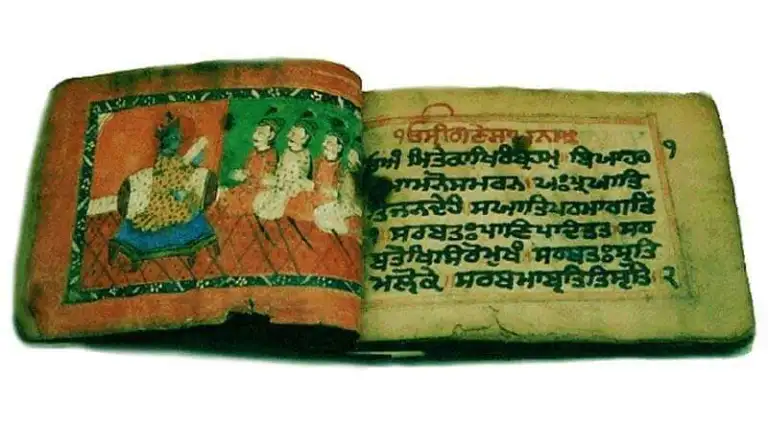
Rigveda
- Veda Means Knowledge. It Shows The Arrival And Settlement Of Aryans.
- Rigveda Has 10 Mandalas, 1028 Verses (1017 Suktas And 11 Valakhilyas) And About 10,600 Mantras.
- The Rigveda Contains A Compilation Of Prayers Composed In The Memory Of Gods Like Agni, Surya, Indra, Varuna Etc.
- In The 10th Mandala, There Is A Mention Of Purushasukta, In Which 4 Varnas (Brahmin, Kshatriya, Vaishya And Shudra) Are Mentioned.
- Gayatri Mantra Is Mentioned In Rigveda. This Mantra Is In Praise Of Surya.
Yajurveda
- Yajurveda Is The Main Text Of Rituals.
- The Brahmins Who Recite It Are Called ‘Adhvaryu’.
- Yajurveda Is Divided Into Two Parts, Krishna Yajurveda (Prose) Shukla Yajurveda (Verse)
- Yajurveda Is The Only Veda Which Is In Both Prose And Verse. Has Been Composed.
Samaveda
- Sama Means ‘Song’.
- Among The Vedas, Samaveda Is Considered The “Father Of Indian Music”.
Atharvaveda
- The Word ‘Atharva’ Means Sacred Magic.
- In The Atharvaveda, There Is A Description Of Disease-Prevention, Royal Devotion, Marriage, Love Songs, Superstitions.
Upveda
- Rigveda-Ayurveda (Related To Medical Science)
- Yajurveda-Dhanurveda (Related To The Art Of Warfare)
- Samaveda-Gandharvaveda (Related To Art And Music)
- Atharvaveda-Shilpaveda (Related To The Art Of Building)
Brahmin
- The Prose Composition Of Every Veda Is A Brahmanical Text.
- Some Brahmins Are Associated With Every Veda.
- Veda Brahmin
- Rigveda Kaushitaki And Aitareya
- Yajurveda Taittiriya And Shatapatha
- Samveda Panchvish And Jaiminiya
- Atharvaveda Gopath
Aranyak
- Aranyak Is Derived From The Word “Aranya” Which Means Forest.
- Aranyaka Is A Philosophical Text Whose Subjects Are Soul, Paramatma, Birth, Death, Rebirth Etc.
- These Texts Were Written In The Quiet Environment Of The Forest And They Were Also Studied In The Forest.
- Aranyakas Act As A Bridge Between The Path Of Knowledge And The Path Of Karma.
Upanishads
- His Literal Meaning Is That Knowledge Which Is Learned By Sitting Near The Guru, In Solitude.
- It Contains Philosophical Thinking About The Soul And Brahma.
- These Are The Main Sources Of Indian Philosophy.
- Upanishads Are 108.
- They Are Also Called Vedanta Because They Are The Last Part Of Vedic Literature And They Tell The Highest And Final Purpose Of The Vedas.
Vedang
- Vedanga Was Created To Understand The Meaning Of Vedas And Correct Pronunciation Of Hymns.
- These 6 Are- Education, Kalpa, Grammar, Nirukta, Chhand And Astrology.
There Are Things Related To Soul, God, Life-Death Etc.
Philosophy Originator
- Sankhya Kapil
- Yoga Patanjali
- Vaisheshika Kanad
- Justice Gautam
- Purva Mimamsa Jamini
- Uttar Mimamsa Badrayana (Vyas)
Puran
The Total Number Of Puranas Is 18.
The Main Ones Are Matsya, Vishnu, Vamana Etc.
The Most Ancient And Authentic Matsya Purana Is
There Are 10 Incarnations Of Vishnu Mentioned.
Ramayan
The Ramayana Was Composed By Maharishi Valmiki.
It Is Also Called Chaturvisati Sahasri Samhita.
Mahabharat
It Was Composed By Maharishi Vyas.
The Mahabharata Is Also Known As Jayasamhita And Satsahasri Samhita.
Memories
Social Rules Have Been Told In These.
Some Of The Main Memories Are As Follows.
Manusmriti, Gautam Smriti, Vishnu Smriti, Narada Smriti, Yagyavalkya Smriti, Vasistha Smriti
Vedic Literature, Vocabulary
- Gavishti: Exploration Of Cows.
- Rai: Used For Wealth In The Vedic Age.
- Adevyu: Those Who Do Not Have Faith In The Gods.
- Abrahman: Those Who Do Not Believe In The Vedas.
- Ayjvan: Those Who Do Not Perform Yajna.
- Anas: It Was Also Used For The Enemies Of The Aryans With Bitter Speech.
- Vajpati: Officer Of The Pasture.
- Kulap: Head Of The Family.
- Gramani: The Head Of The Fighting Parties.
- Brajpati: The Head Of The Village.
- Jana Or Vish: Vedic Clan (Prajajan)
- Napt: A Word Used For Nephew, Great-Grandson, Cousin, Etc.
- Samhita: A Collection Of Vedic Hymns Or Mantras.
- Bali: A Voluntary Gift Given To The King.
- Rashtra: Region Or Territory (Used For The First Time In The Vedic Age)
- Hotr Or Hota: The Sage Who Recited The Verses Mentioned In The Rigveda.
- Adhvaryu: The Priest Who Recited The Mantras Related To Yagya, Mentioned In The Yajurveda.
- Udgata: The Priest Who Sang The Hymns Related To The Yagya, Mentioned In The Samaveda.
Vedic Literature
- Vedas – Rigveda, Yajurveda, Samveda, Atharvaveda Brahmin – Aitareya, Kaushitaki, Shatapatha, Panchvish (Tandya), Gopatha
- Aranyaka – Aitareya, Taitreya, Maitrayani, Shankhayan, Brihadaranyaka, Madhyandina, Talvakar
- Upanishads – Ish, Ken, Katha, Mundaka, Mandukya, Aitareya, Taitreya, Shvetasvatara, Chandogya, Brihadaranyaka, Kaushitaki, Prashana
- Vedanga – Education, Kalpa, Grammar, Nirukta, Verse, Astrology
- Kalpasutra – Srautasutra, Grihyasutra, Dharmasutra
- Upveda – Ayurveda, Dhanurveda, Gandharvaveda, Shilpveda
| Rigvedic Era | Post Vedic Age | |
|---|---|---|
| Time | 1500-1000 BC | 1000-600 BC |
| Texts | Rigveda | Yajurveda, Samveda, Atharvaveda, Brahmanical Texts, Aranyak Granth And Upanishads |
| Geographical Knowledge | Afghanistan, Punjab, Sindh | Entire Doab, East Bihar, Vindhya Region |
| Mountain | Moojwant (Himalayas) | Canz, Trikkud, Mainak |
| Sea | Possibly The Arabian Sea | Arabian Sea, Indian Sea Ocean, Bay Of Bengal |
| Community | Patriarchal | Patriarchal |
| Chromaticity | Last Minute | Prevailing |
| Gotra System | Not Popular | Became Popular |
| Ashram System | No Evidence | Development Started |
| Purdah System, Hair | Not Popular | Not Popular |
| Event | Insignia |
|---|---|
| Birth | Lotus And Bull |
| Home Abandonment | Horse |
| Knowledge | Peepal Tree |
| Nirvana | Footprint |
| Death | Stupa |
Important Facts
- There Is No Indication Of The Divine Position Or Divine Authority Of The King In The Rigvedic Period. The Rigvedic Political System Was Basically A Tribal System Of Government, In Which Military Sentiment Was Predominant.
- There Was No Such Thing As A Civil System Or A Territorial Administration, As People Were Constantly Changing Their Places And Spreading.
- The Two Tribal Councils In Which Women Could Participate Were The Sabha And The Vidatha.
- In Atharvaveda, ‘Sabha’ And ‘Samiti’ Are Considered As Two Daughters Of Prajapati.
- In The Rigveda, ‘Shardha’, ‘Vata’ And ‘Gana’ Are Military Units.
- The Division Based On Occupation Had Started In The Rigvedic Period. But This Division Was Not Yet Clear.
- There Is No Name Of Fish In Rigveda.
- The Word ‘Anas’ Has Been Used For The Bullock Cart.
- The Word ‘Pathi-Krit’ Has Been Used For The Fire God.
- ‘Bhishaj’ Used To Call Vaidya.
- When The Aryans Arrived In India, They Were Divided Into Three Categories: ‘Warriors’ Or Aristocrats, ‘Priests’ And ‘Commoners’.
- The Fourth Class Of Shudras Emerged In The Late Rigvedic Period.
- The Deities Related To Household Life Are Agni (It Had Three Forms – Sun, Electricity And Material Fire), And Soma (Drink Of Nectar).
- In The Rigvedic Period, There Were Two Abstract Gods – ‘Shraddha’ And ‘Manyu’.
- The Age Of Marriage In The Rigvedic Period Was Probably 16-17 Years.
- The Main Reason For The Social Division In The Rigvedic Period Was The Victory Of The Aryans Over The Local Residents.
- Fire-Worship Had Great Importance Not Only In India, But Also In Iran.
- There Are Mentions Of Goddesses Like ‘Ushas’ And Aditi Representing The Dawn, But They Were Not Given Special Importance In This Work.
- There Is Only One Metal Ayas Mentioned In ‘Rigveda’.
- 1200 BC Based On The Widespread Use Of Bronze In Iran, It Has Been Assumed That Ayams Was Bronze.
- There Is No Mention Of Vipassa In ‘River-Praise’.
- In Its Place There Is Mention Of Marutavrudha (Probably Maruvardhan Of Kashmir).
- The Vedic People First Used The Metal Of ‘Copper’.
- Ganga Is Mentioned Once, Yamuna Thrice And Sarayu Once In Rigveda.
- In The Later Vedic Period, The Aryans Spread Throughout Western Uttar Pradesh Extending From Punjab To The Ganga-Yamuna Doab.
- The Kuru People Were Derived From A Group Of Tribes Called Bharata And Puru.
- Delhi And The Northern Part Of The Doab (Ganga-Yamuna) Were Called Kurudesh.
- The War Of Mahabharata Probably Happened In 950 BC. Was Fought In.
- The People Of The Later Vedic Period Did Not Know How To Use Pucca Bricks.
- Agriculture Was The Main Means Of Subsistence Of The Post-Vedic People.
- The Shatapatha Brahmana Gives Detailed Information About The Rituals Related To Ploughing.
- The Rigvedic People Continued To Grow Barley, But During This Period (Post-Vedic) Their Main Crops Became Rice And Wheat.
The People Of The Later Vedic Period Were Familiar With Four Types Of Pottery
- (I) Black And Red Ware
- (Ii) Black-Slipped Ware
- (Iii) Painted-Grey-Ware &
- (Iv) Red Ware Red Bhand Was Most Dear To Him, But The Painted Gray Bhand Is The Typical Bhand Of This Era.
- The Mention Of The Word City May Be Found In The Texts Of The Later Vedic Period, But The Beginning Of The Actual Cities Is Rarely Seen In The Last Phase Of The Later Vedic Period.
- The Importance Of Jan Parishads Had Declined During This Period.
- Vidaths Were Completely Destroyed.
- Now Women Could Not Attend The Meetings.
- The Worship Of Ancestors Started From This Period.
- The Gotra System Was Established During This Period.
- During The Vedic ( Rigvedic ) Period, The Ashramas Were Not Yet Established Properly.
- The Texts Of The Later Vedic Period Mention Only Three Ashrams (Brahmacharya, Grihastha And Vanaprastha).
- The Ashram System Was Completely Established In The Post-Vedic Period Itself In Four Ashrams (Brahmacharya, Grihastha, Vanaprastha And Sanyas).
- The Entire Vedic Literature Was Compiled In Kuru-Panchal (West Uttar Pradesh And Delhi) Region.
- Idol Worship Started In The Later Vedic Period.
- There Is No Information About It In The Vedic Period. The Inhabitants Of The Harappan Civilization Also Probably Believed In Idol Worship.
- Brahmana Was One Of The Sixteen Types Of Priests Who Performed The Yagyas.
- Cows, Gold, Cloth And Horses Were Given As Donations In The Sacrifices.
- Janpad States Started In The Later Vedic Period.
- The First Use Of The Word Vishva (Vaishya) Is Found In The Vajasaneyi Samhita.
- The First Mention Of The Word Shudra Is Found In The Purusha Sukta Of Rigveda.
- The Shudra Varna Is Mentioned In The Atharvaveda Along With Other Classes.
- The Woman Who Troubled The Sage Yajnavalkya With His Subtle Questions In Debate Was Gargi Vachknavi.
The Names Of Metals Mentioned In Yajurveda Are As Follows
- Deer Gold
- Or Bronze
- Shyam Ayas (Krishna Ayas) Iron
- Iron Ore Copper
- Sis Lead
- Trishu Raga
- 2,40,000 Cows Were Given As Dakshina To The Chief Priest Who Performed The Rajasuya Yagya.
- The First Description Of The Three Ashrams Is Found In The Chandogya Upanishad.
- The First Description Of The Four Ashrams Is Found In Jabalopanishad.
- A Detailed Study Of The Yagyas Like Ashwamedha, Vajpeya, Rajasuya Etc. Shows That Originally Their Aim Was To Increase Agricultural Production.
- The Brahmanas Of The Krishna Yajurveda Are Usually Composed First In Chronology Followed By The Taittiriya Brahmanas, The Original Sections Of The Aitareya And Then The Kaushitaki.
- The Ganges Can Be Considered The Eastern Boundary Of The Rigvedic Aryans’ Abode.
- On The Basis Of Later Vedic Literature, Vindhya Pradesh Can Be Considered As The Southern Boundary Of The Geographical Expansion Of The Aryans Of The Later Vedic Period And The Videha, Kosala, Anga And Magadha Countries As The Eastern Boundary.
- Cultures Matching The Chronology Of Rigveda Include Black And Red Ware, Copper Hoards And Ochre Colored Pottery.
- But None Of These Can Be Considered Definitively The Work Of The Rigvedic People.
- Most Of The Sites Of Ocherni Pottery (OCP) Culture Are Concentrated Not In The Saptasindhav Region, But In The Ganga-Yamuna Doab.
- Gray Pottery (PGW) Has Been Found From Afghanistan, Punjab And Northern Rajasthan, Which Have Been The Centers Of The Activities Of The Rigvedic People, But Chronologically They Can Be Dated At Most To The Last Century Of The Rigvedic Period.
- Punch Mark Coins, The Oldest Coins Of India, Were In Circulation Around 600 BC. Armed With Words Like Gaveshan, Gosha, Gavya, Gamya Etc. Were Used For War.
- There Are A Total Of 10,462 Verses In The Rigveda, Of Which Only 24 Mention Agriculture.
- Rigveda Mentions Only One Grain “Yava” (Barley).
- The Main Difference Between The Rigvedic Society And The Later Varna Society Was That Due To The Absence Of Surplus Production, The Conditions Of Class Distinction Could Not Arise In The Rigvedic (Tribal) Society.
- In The Napta Rigveda, This Word Has Been Used For Cousin, Sister, Nephew, Great-Grandson Etc.
The Main Features Of The Social, Economic And Political Structure Of The Later Vedic Period Were
- 1. Agricultural Economy
- 2. Rift In The Tribal Structure
- 3. Birth Of The Varna System And
- 4. Rise Of Regional Empires In Maitrayani Samhita (Late Vedic Period), Women Are Counted Among The Three Main Evils Along With Dice And Sura.

